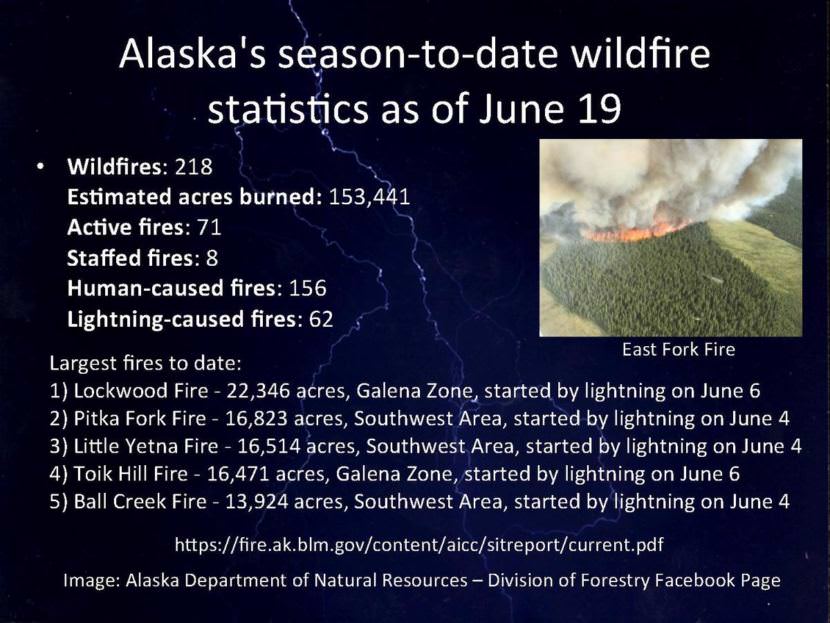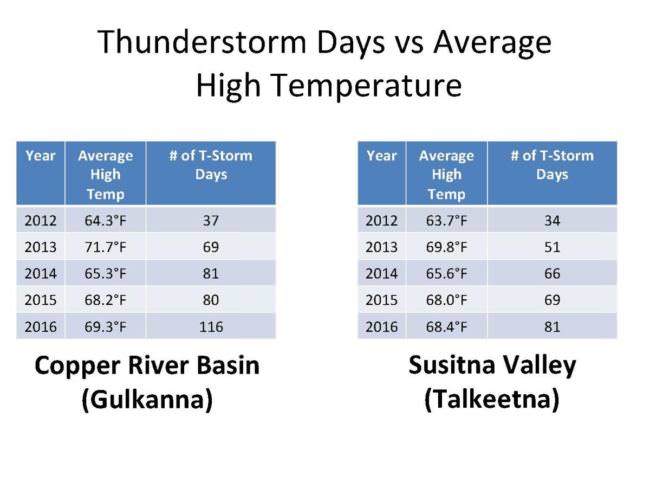Lightning sparked about a quarter of the 218 wildfires reported in Alaska as of Monday. But those fires account for 97 percent of the more than 151,000 acres that have been burned by fire so far this year. And more than half of those acres were blackened by five fires around Galena and southwestern Alaska.
“The top five fires for this year so far have been lightning-started,” says Matt Clay, a meteorologist with the National Weather Service in Anchorage. During a webinar hosted this week by the Alaska Center for Climate Assessment and Policy, Clay talked about a five-year study on lightning activity around Southcentral Alaska that he and another meteorologist put together.
“Just last week, for instance, the East Fork Fire was likely started by a lightning strike on the Kenai Peninsula, and has burned over 1,300 acres so far.”

Clay’s study shows average high temperatures are increasing around Southcentral, as are the number of days in which thunderstorms occur. But he says there’s only a weak correlation because those increases are at least partly due to the network of new and much more accurate lightning sensors that were activated statewide in 2012. Rick Thoman, with the weather service’s Fairbanks office, agrees the new sensors skew the data, making it difficult to discern whether warming is affecting the length of Alaska’s lightning season.
“While you can get rogue thunderstorms as early as the last days of April through May, it’s really only the last week of May that the occurrence really starts to ramps up,” he said. “And we haven’t seen much change in that yet.”

Thoman, a climate science and services manager, says studies show that the eastern Interior of Alaska is likely to get more moisture, earlier, in the years ahead. And he says that suggests the possibility that the lightning season there could eventually get longer.
“Especially if snow melts earlier and the land is able to warm up sooner, that will push the start of the season to earlier dates, as well.”
Thoman and Clay both say there’s not enough data yet to support that assertion. Clay says more studies, and more data collected by the updated sensor network should help climatologists determine whether Alaska’s lightning season will be getting longer.
